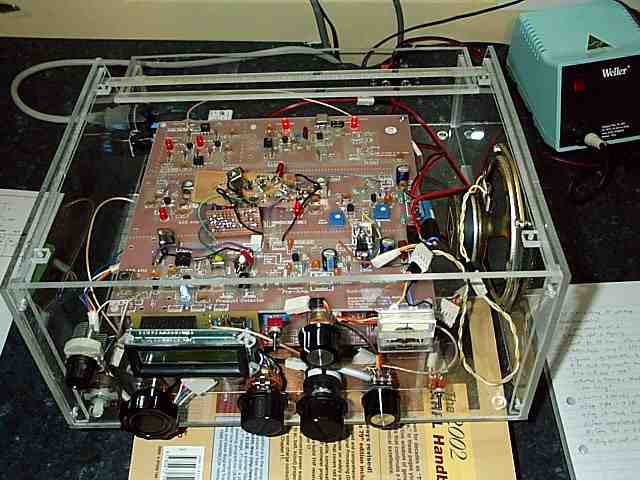


|
The SWL receiver above was built using the Electroluminescent Receiver Kit as a base for the development of an SWL receiver incorporating changes that Mr. Watson studied, designed, and experimented to implement a receiver that covered all the SWL bands he desired. In an email before he ordered the kit, Mr. Watson stated: "The great thing about your kit is that 95% of the circuitry is what I'd require for any receiver, and I can experiment with VFO's and bandpass filters for wider coverage from something that already works." "I am interested more in the MW/SW bands than the amateur bands, but it seems that your design is very flexible...." The Design ProcessThe image above also shows some of the requirements that every designer/builder should incorporate: First: Reference material. Note that the receiver is setting on one of the latest editions of the ARRL Handbook, one of the best reference books for not only Amateur Radio Operators, but for commercial design engineers as well. Second: A pad full of schematic diagrams (middle left). You must document what you do. I lost the greatest crystal set I ever designed when I was a kid because I didn't write down the schematic. You never know what will work! Or what you will accidentally discover (I don't need to elaborate that point!). Third: Keep accurate notes of what you are doing and why (bottom right). All the tests you perform, the results you obtained, and why you built the circuit you did must be written down if you don't want to keep repeating, confusing, or losing yourself in the design process. The message here: document, document document!!!! Keep that pencil and paper handy! And just because you are totally broke and don't have the material the big boys have can turn into your advantage. You don't get locked down into the current thinking of why things are built, and have the freedom to come up with something entirely new because you didn't know it couldn't be done. In some cases, a pure design process might be better if you didn't know rather than knowing it all! Don't let anything intimidate you if you have the desire to pick up a soldering gun and weld a bunch of parts together. |
Send E-Mail || Amateur Radio Receivers || Electroluminescent Receiver || Gary Rondeau's SWL Receiver Modifications
